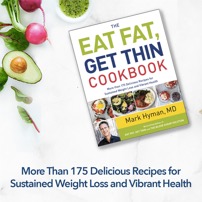 The American Heart Association recommends that adults get no more than 5 percent of their calories from saturated fat, and urges people to use vegetable oils instead. The AHA advises people to eat at least 5 to 10 percent of their calories in the form of omega 6 PUFAs – that’s polyunsaturated fat. The rationale for this is that unlike saturated fat, linolenic acid from PUFAs lower LDL cholesterol levels.
The American Heart Association recommends that adults get no more than 5 percent of their calories from saturated fat, and urges people to use vegetable oils instead. The AHA advises people to eat at least 5 to 10 percent of their calories in the form of omega 6 PUFAs – that’s polyunsaturated fat. The rationale for this is that unlike saturated fat, linolenic acid from PUFAs lower LDL cholesterol levels.
As a result, the average intake of linoleic acid which is an omega 6 fatty acid has risen sharply since the 1960s, and even more dramatically since the early 1900’s. Americans consume at least twice the amount of linoleic acid today than they did in the 1960s.
The Consequences of our Omega 6 Obsession
The increase in these highly inflammatory and unstable omega 6 fats in our diet has led to an increase all inflammatory diseases. Overconsumption of omega 6 fats and under consumption of omega 3 fats has led to increases in cardiovascular disease, type 2 diabetes, obesity, pre-diabetes, IBS, arthritis, asthma, cancer, autoimmune diseases and more!
So while the advice to eat more polyunsaturated fats instead of saturated fats may have started with good intentions, it has caused disastrous results. The oil industry has been big in pushing first trans fats, and then highly refined vegetable oil mostly omega 6 polyunsaturated fats. Yet in the forms they are consumed by most Americans, they are highly toxic.
Consider an Oil Change…
So what’s the alternative? What fats should we be cooking with? Well, definitely not refined highly processed vegetable oils. Instead, I suggest using more plant based and animal stable fats such as coconut oil and even lard. This sounds like heresy, I know, but after a deep reading of the literature on this topic from a neutral perspective, I have completely changed my diet and those of my patients. Now, I embrace coconut oil, ghee, and even some grass-fed butter as part of my diet (as long as you are not allergic to dairy).
Now, studies show saturated fat raises LDL (your so-called “bad” cholesterol) but it improves the quality of the LDL and increases its size making it less likely to promote heart disease. It also raises HDL (“good” cholesterol). Ultimately, the ratio of total to LDL cholesterol and particle number and size are a far bigger predictor of heart attacks than LDL itself. Interestingly, countries with the highest intakes of coconut oil have the lowest rates of heart disease.
While research shows coconut oil contains higher amounts of saturated fat and does increase total cholesterol, it also raises HDL, the good cholesterol the most and actually improves your TC/HDL ratio (a good thing) which is a far better predictor of heart attacks than LDL.
So, bottom line, I recommend cutting out all refined oils except for extra virgin olive oil. For cooking, you can use extra virgin coconut oil, avocado oil (which can be used at higher temperatures) and even ghee which is clarified butter.
Olive oil is best for low-heat cooking or used raw for dressing salads. Avocado oil, macadamia oil, and walnut oil also are wonderful raw and make great dressings.
With all oils, always choose organic, unrefined, cold-pressed, or expeller pressed. Be sure to do your research and don’t be afraid to contact the company directly to ensure the product is truly cold-pressed. Organic production prohibits GMOs and the use of hexanes for extraction in oils.
 So, now you know what fats to use, but you might need some recipe inspiration! I’ve put over 175 recipes in my new book, Eat Fat, Get Thin Cookbook that feature so many healthy, mouthwatering fats. If you’re confused about what fats to use and how to use them, I highly recommend checking out this book so you can take advantage of healthy fats and kicks bad fats to the curb!
So, now you know what fats to use, but you might need some recipe inspiration! I’ve put over 175 recipes in my new book, Eat Fat, Get Thin Cookbook that feature so many healthy, mouthwatering fats. If you’re confused about what fats to use and how to use them, I highly recommend checking out this book so you can take advantage of healthy fats and kicks bad fats to the curb!
Click here to get your copy of my new book, Eat Fat, Get Thin Cookbook




